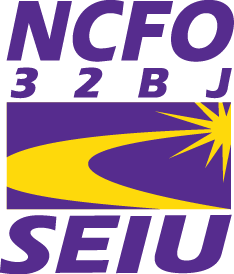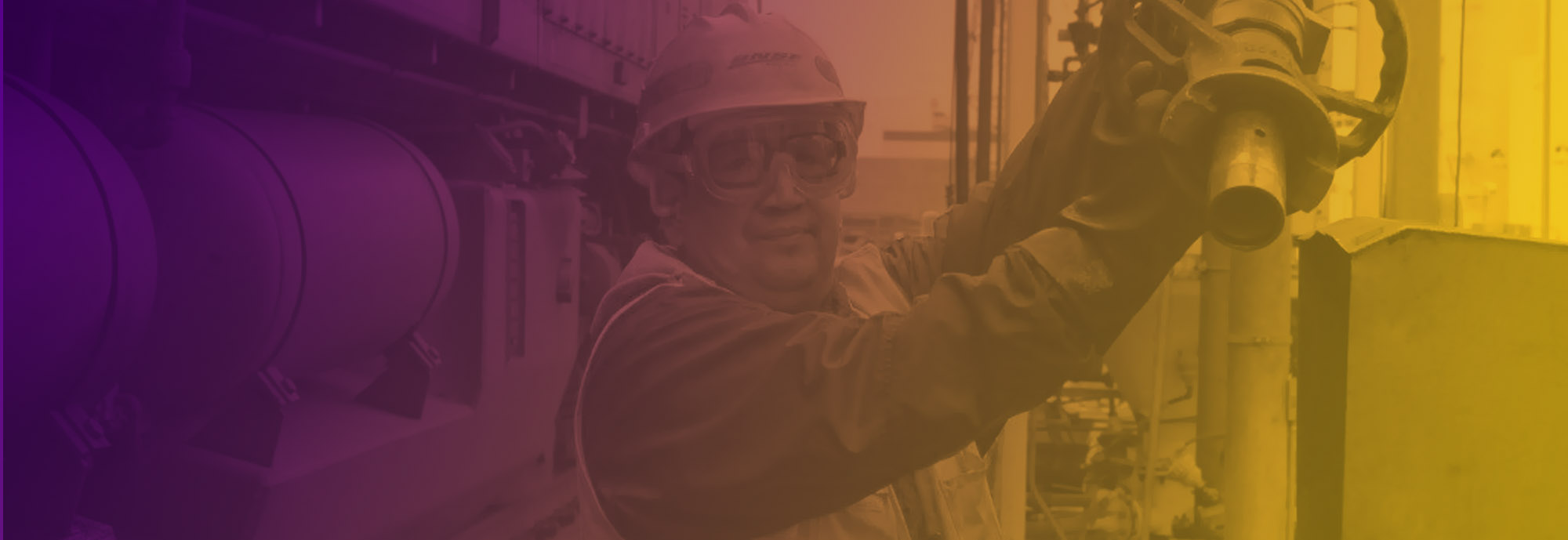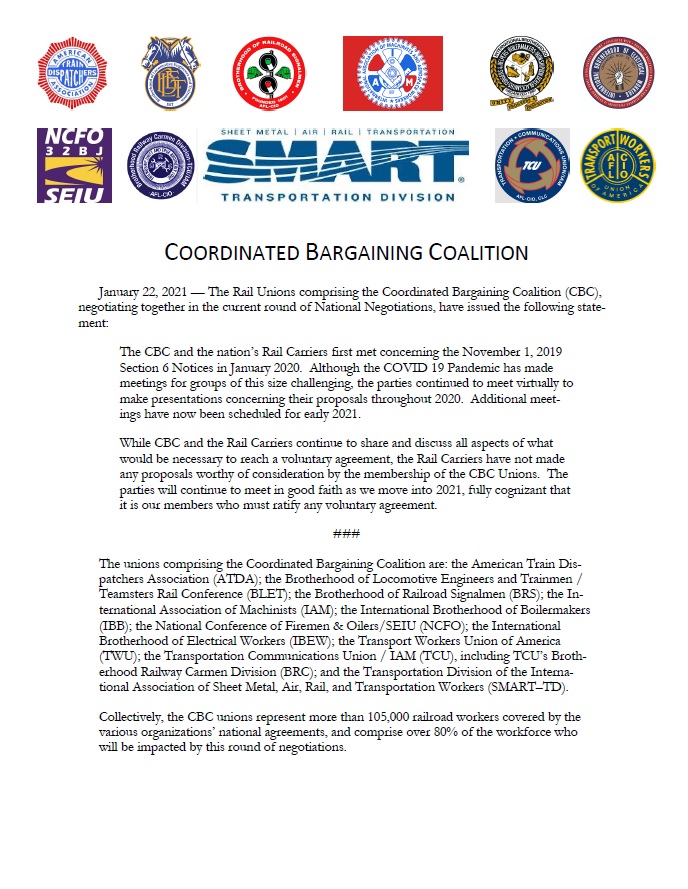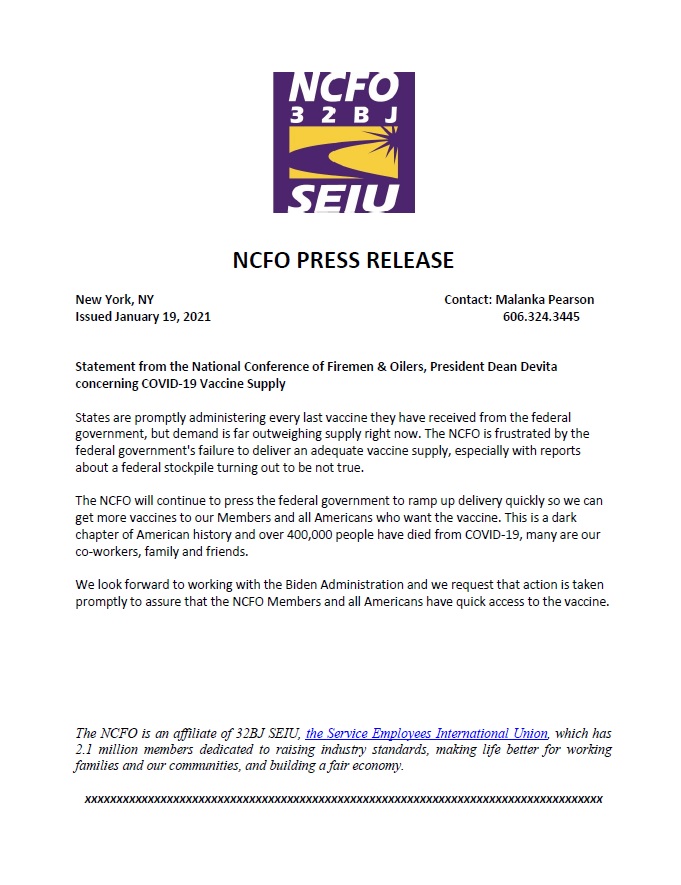
On behalf of the Transportation Trades Department, AFL-CIO (TTD), and our 33 affiliated unions, I want to thank Chair Schakowsky and Ranking Member Bilirakis for inviting me to participate in today’s hearing. I also want to acknowledge that, while not an affiliate of TTD’s, we have worked closely with the International Brotherhood of Teamsters on automated vehicle (AV) policy, and my testimony fairly characterizes our shared positions on this topic. Hundreds of thousands of union members face a future of technology-enabled change and their voices must be a part of any debate over the deployment of AV and other transportation technologies.
At the outset, I would ask the Committee to allow me to submit joint labor principles that we believe must form the basis for any AV legislation put forth by Congress. My testimony today will be an expansion of the principles laid forth in that document.
The broad impacts of automated vehicles on America’s workers
Technological change in transportation is not new to transportation workers. They have lived through generations of new breakthroughs and have demonstrated their skill and adaptability as innovations accelerated and placed new demands on them while redefining our system of mobility. Meanwhile, their jobs and skills requirements have constantly evolved and Americans have benefited from their resiliency, precision, and know-how.
Since the introduction of the SELF DRIVE Act in this committee and the AV Start Act in the Senate four years ago, we have seen a rapid expansion of AV technology operating on American streets, from automated driving systems like Tesla’s Autopilot feature to Waymo’s driverless ride-hail operation to pilot projects in transit and commercial transportation. These AV experiments are just that—experiments. But unlike a standard experiment, these AV tests occur not in a laboratory but in real time on public roads shared with other vehicles, bicycles, scooters, and pedestrians including people with disabilities. These experiments have proven at least one thing: that AV vehicles crash frequently and remain an unproven technology with unsolved engineering challenges. In other words, this technology is not safe enough to operate without federal oversight. But thanks to the Trump administration’s refusal to lead, our government lacks a responsible regulatory regime on the books that ensures safety before AVs are allowed on our streets. The approach to regulation is shortsighted and irresponsible at best, and potentially catastrophic at worst. This simply cannot be the federal government’s approach to AVs moving forward.
Policy makers must balance the interests of a growing industry with transportation safety and American workers’ needs to care for their families and retire with dignity. This is not an all or nothing choice. But transportation labor steadfastly rejects the hands off, deregulatory approach to the radical disruptions that AV will bring to roadway safety and good American jobs. I urge you to tread carefully and consider both the opportunities and risks posed by this new technology. This is not the first time we have faced technological change and we should learn the lessons that history can teach us about the risks and opportunities AVs pose to workers, safety, American industry, and our economy at large.
We know that AVs threaten to drastically alter the provision of service and the nature of work, while placing millions of jobs at risk. Most authoritative research agrees that automation will threaten to eliminate and drastically alter millions of jobs. A recent study estimates that over the next 30 years, between 39 and 73 million American jobs stand to be automated.1 In the commercial driving sector alone, reports suggest that between 700,000 and 1.7 million workers may be displaced or have their jobs fundamentally changed by automation—with other estimates closer to 3 million.2 And with automated shuttle pilot projects already on the ground in a growing number of American cities, the transit workforce of 400,000 workers may find their jobs slowly phased out in favor of autonomous transit systems.
Proponents of automation suggest that the labor market is “well equipped to reabsorb displaced workers,” while touting the benefits of new jobs in the AV and technology industry. Yet those proponents gloss over a critical question: will displaced labor be “reabsorbed” into jobs with similar income and workplace protections? Negative shocks to the economy—like the one many would experience as a result of disruptive AI—can cause significant long-term damage to workers’ earning potential. One study suggests that workers’ earnings may be depressed by 10 percent or more, even more than 10 years after they are displaced.3
While this committee’s jurisdiction may not extend to crafting policies to mitigate these workforce impacts, I would suggest that you nonetheless have a responsibility to the American people to work with your colleagues across other committees to ensure any AV legislation takes full stock of its potential negative impacts and of policy solutions that may help the labor market better absorb the shock of automation and the workforce prepare for the transition.
Automated vehicles’ record of safety
News stories over the past four years clearly reveal the need for a strong federal framework for AV testing and deployment. Rather than providing exemptions and waivers, Congress should be focusing on empowering the US Department of Transportation (DOT), NHTSA, and other federal regulators to treat this technology with the seriousness it deserves. Consider the following, which represents a mere snapshot of incidents involving AVs:
- In a well-publicized 2018 incident, an Uber automated vehicle pilot test resulted in the death of a pedestrian. It was reported at the time that test vehicles were involved in 37 crashes over the prior 18 months leading up to the fatal crash.
- In 2019, a self-driving shuttle in Las Vegas crashed into a truck. While there was an operator on board, they did not have direct access to the manual override controls.
- In 2020, a self-driving shuttle in Ohio came to an abrupt stop, requiring a passenger who was thrown from their seat to receive medical attention for their injuries. This pilot project was a component of the 2015 Smart Cities challenge.
- In 2020, a self-driving shuttle in Utah sent a 76-year old man to the hospital after it came to an abrupt stop.
- NHTSA has opened investigations into 27 crashes involving Tesla vehicles. There have been at least 11 deaths in Tesla vehicles that involved their autopilot feature in the US alone.
- A 2020 report showed that Waymo’s driverless cars were involved in 18 accidents and 29 near-miss collisions over a 20-month period.
For too long, proponents of the AV lobby have pushed a rosy narrative that brushes aside safety, workforce, and equity issues to convince our government to prematurely get vehicles to market as quickly as possible. And they’ve managed to gain support from some of our elected officials, most notably in the Trump administration, which played the role of AV cheerleader instead of safety regulator. To ensure AVs meet the promise their proponents have touted for all Americans, the following principles must form the basis of any comprehensive automated vehicle legislation.
Labor principles for automated vehicle legislation
1) Workers must have a voice in the adoption of new technology
For more than 80 years, employees affected by technological changes in the transportation sector have benefited from comprehensive employee protections providing for job guarantees, training and retraining programs to learn and apply the new skills, and the continuation of their collective bargaining rights and terms and conditions of employment.
These protections have enabled the commercial driving and transit industries and their employees to successfully adopt and adapt to new technologies, including those requiring advanced computer and engineering skills. Federal legislation anticipating such changes must ensure that these protections apply and cover the workforce affected by the introduction of autonomous vehicles and other innovations.
Unfortunately, this standard was not met in any previous AV bill, in the DOT’s Smart City Challenge, in any current draft AV legislation I have seen from this committee, or in Senator Thune’s recent AV proposal in the Senate. And it certainly was not included in any of the Trump administration’s ill-advised AV policy proposals. Specifically, while AV bills considered by Congress have largely omitted commercial vehicles over 10,000 lbs.—a decision we strongly support for reasons detailed below—they failed to address how the federal government should more broadly respond to workforce issues caused by automation.
As detailed in our joint principles document, Congress should attack this issue from multiple fronts. With regard to public transportation, legislation should direct comprehensive regulations through the DOT and its Federal Transit Administration (FTA) that would require workforce impact assessments be conducted jointly by representatives of the frontline workforce and management at any agency utilizing AVs, and the application of transit-related AV labor standards. Moreover, legislation that allows the commercial application of AVs, which may negatively impact public transportation ridership, must also include provisions that create career ladder and apprenticeship programs for transit workers, ensure the manufacture and development of new technologies is done within the U.S., and that new jobs created come with union protections.
For private transportation, Congress should examine the impact smaller AVs will have in high-risk industries such as taxicab and rideshare operations, private shuttles, and food/package delivery operations. These reviews should be combined with aggressive policies aimed at mitigating both job losses and wage degradation via job retention, just transition, vehicle taxation regimes, allocation of retraining funds for displaced workers, wage supplements, and the restriction on the use of independent contractors throughout the industry. They should also be combined with robust manufacturing standards to ensure that vehicles, components, and engineering work is done in the United States. These rules should be put into place before any widespread deployment or approvals for AVs are granted.
2) Safety must be paramount
TTD urges this committee to incorporate the safety framework developed in the Joint AV Tenets introduced by Advocates for Highway and Auto Safety and endorsed by our organization. Bus operators, truck drivers, and thousands of other transportation workers will be sharing the road with AVs for years to come if widespread use is authorized. The performance of AVs will be of paramount importance to safety throughout our entire transportation network for both system users and our members, whether they operate on the roads and transit systems or work in other roles with AVs such as performing maintenance or loading the vehicles.
The Joint AV Tenets were developed by safety advocates and equity partners, as well as our unions. All workers deserve to know that an autonomous car or bot driving next to them is safe enough to be on the same road or in the worksite. Any legislation written by Congress or regulations promulgated by the DOT must strengthen the development of future Federal Motor Vehicle Safety Standards (FMVSS) for AVs and mandate tests of key components (i.e., a vision test) on any system whose performance is inseparable from the safe deployment of that vehicle. Congress and the federal government must focus on strong safety regulation and enforcement rather than the hands-off policies sought out by the AV industry—those based on waivers and exemptions that clear the way for widespread piloting and deployment of unproven AVs. Too much is at risk for millions of motorists and transit system riders for AVs to be “left to the market” to sort out the solutions to myriad hazards and challenges.
3) Define the scope appropriately
We urge Congress to continue the carve-out for vehicles over 10,000 pounds. Heavy commercial motor vehicles offer a laundry list of unique operational challenges which will greatly complicate the introduction of AVs into that space. Frontline commercial vehicle operators do not just drive—they have unique training to react to adverse situations and an array of challenges that an AV is ill equipped to handle without a human on board. Professional drivers are trained to account for shifting loads, the higher center of gravity a fully loaded trailer may have, and the need to identify and engage in defensive driving when surrounded by distracted drivers in the lanes next to them. Small vehicles bear little resemblance to the design or operational realities of buses, trucks, or heavy-duty construction vehicles and should not be considered under the same regulatory framework as personal cars or fleets of small vehicles delivering individual packages. Small cars aren’t capable of killing dozens of people if the automated driving system malfunctions, but a fully loaded 80,000-pound tractor-trailer is. The enormous workforce concerns surrounding the use of these larger vehicles also necessitates their separate consideration. We applaud Congress for recognizing these challenges and excluding vehicles over 10,000 pounds in every AV bill that has been introduced to date.
Automated vehicles weighing less than 10,000 pounds that are providing passenger service must have a human driver. The operators of passenger service vehicles are critical to the safe and accessible delivery of transportation services, both for the passengers and for all other road users. Any legislation or regulations designed to facilitate the deployment of AV technologies must mandate an operator on board who is there to perform an array of critical tasks and is available to take over automated operations that we know from experience will fail or falter. The presence of an operator ensures that someone is there to respond to emergencies and summon first responders, facilitate and comply with ADA needs, prevent vehicles from becoming magnets for crime, and critically, to provide a backup in the case of technological failure. We do not allow passenger airplanes to operate without pilots or passenger rail to run without engineers, and we should use a similar approach with AVs that operate on our often-congested roadways and in complex transit networks.
Finally, Congress must consider alternative design vehicles such as delivery bots. Any vehicle that is under the 10,000-pound threshold that will travel on public roads must be properly regulated and not made exempt from the safety mandates embodied in any AV legislation. We have already seen these smaller AV vehicles receive special treatment (including waivers from safety requirements) from regulators simply because they are lighter and travel at lower speeds. TTD expressed strong criticism of the previous administration’s approach in granting such exemptions. These vehicles should also be subjected to proper federal scrutiny and safety requirements. This includes the creation of a new federal operating authority for bots and delivery vehicles. Any vehicle that is being used solely for commercial purposes must be required to carry a minimum level of insurance in the case of a crash and demonstrate a comprehensive maintenance plan that accounts for the heavy wear and tear it will undergo as a part of continuous commercial operations.
4) Federal policies must ensure that jobs in AV manufacturing are good jobs
Promoters of AV technology repeatedly make the claim that we are falling behind China and other countries in the development and deployment of automated driving system technologies. Without clear federal leadership, history tells us that American manufacturing workers will be guaranteed to fall behind and be the last to benefit from the economic gains that might be inspired by these technologies. Lawmakers must take clear steps to ensure broadly shared prosperity and that jobs created in AV manufacturing are good jobs here in America. U.S. government assistance for the development of AV technologies, federal procurements of AVs, or procurements by transit agencies or state and local governments through federal assistance must come with strong Buy American policies and a U.S. Employment Plan or similar procurement standards. These requirements will help to ensure that the development and use of AVs also produces broad community benefits and leads to good middle-class domestic manufacturing and supply chain jobs.
5) Ensure consumer rights, equity, and accessibility are key components of any
framework
The AV industry claims broad deployment of this technology stands to help improve access to
transportation for disadvantaged populations. But if wrongly implemented, they also risk
exacerbating long-standing inequities which have existed across racial, gender, and socioeconomic lines for generations. Professional driving has long been a solid path to the middle class, including for women and people of color. Nearly 40 percent of professional drivers are non-white, and men and women both work as bus operators across the country at about the same rate. Transportation jobs have higher unionization rates than many other professions, and as a result, they pay significantly better than most jobs the same individuals would be likely to find in non-driving occupations.4 Congress must keep these ladders to the middle class intact before and during the eventual introduction of AVs onto our roads or in our transit systems. Without specific safeguards, AVs are likely to undermine equity and worker rights while cementing longstanding social injustices.
Our unions also represent many workers who currently provide paratransit for older adults and individuals with disabilities. We know how much of a lifeline these services can be to many individuals and their families. If deployed, AVs must not degrade universal access to these services. Isolated and marginalized communities must share in the benefits of these mobility options. This will require adequate staffing levels to ensure the presence of well-credentialed safety monitors aboard AV-enabled paratransit operations, and assurance these types of services will remain accessible for all.
Conclusion
While ensuring a safe framework for the deployment of automated vehicles is a critical task before this committee, I would remind you that your work must be a part of a larger package that takes full stock of the disruptive nature of this technology. We have seen the impacts of automation on other sectors—manufacturing, health care, and retail, to name a few—and the consequences when public policy fails to protect the workers and users it impacts. I urge you to give our safety and workforce concerns the full weight they deserve, and to work closely with your colleagues across other committees in the development of comprehensive policy that protects our transportation system and country from the premature and irresponsible deployment of AV technology. Please reject the AV lobby’s poorly veiled attempt to sidestep all the tough questions surrounding AV deployment. Our broadly based set of principles and proposals take on the toughest questions and offer a responsible path forward.
- Manyika, James, et al. “Jobs Lost, Jobs Gained: What the Future of Work Will Mean for Jobs, Skills, and Wages.” McKinsey & Company, www.mckinsey.com/featured-insights/future-of-organizations-and-work/Jobs-lost-jobs�gained-what-the-future-of-work-will-mean-for-jobs-skills-and-wages; “Artificial Intelligence, Automation, And The Economy”. Whitehouse.Gov, 2018, https://obamawhitehouse.archives.gov/blog/2016/12/20/artificial-intelligence�automation-and-economy.
- “America’s Workforce and the Self-Driving Future.” Securing America’s Future Energy, June 2018, avworkforce.secureenergy.org/.
- Steven J. Davis and Till Von Wachter, “Recessions and the Costs of Job Loss,” Brookings Papers on Economic Activity, Economic Studies Program, The Brookings Institution, 43(2): 1-72, 2011, https://www.brookings.edu/wp�content/uploads/2011/09/2011b_bpea_davis.pdf
- http://globalpolicysolutions.org/report/stick-shift-autonomous-vehicles-driving-jobs-and-the-future-of-work/
XXXXXXXXXXXXXXXXXXXXXXXXXXXXXXXXXXXXXXXXXXXXXXXXXXXXXXXXXXXXXXXXXXXXXXXXXXXXXXXXXXXXXXXXX





